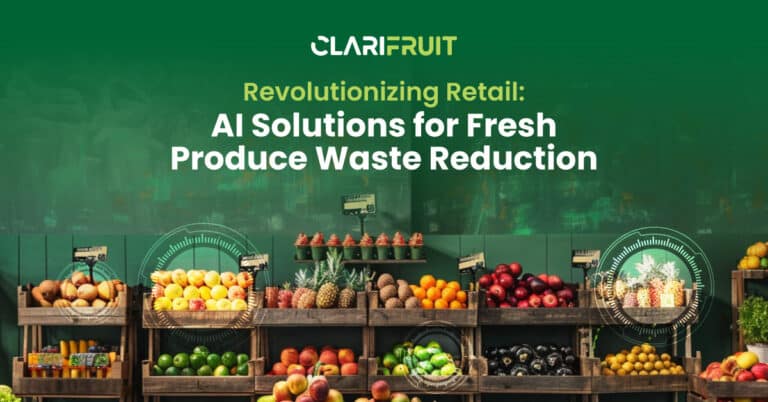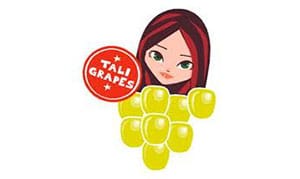The Importance of Fruit Quality Control & Testing for Apples
There are more than 100 types of apples grown for commercial sale in the United States alone, and dozens of variations in terms of size, color, shape, and taste. Think about the difference between a Red Delicious apple and a Granny Smith, and you’ll begin to realize how much variation there can be! But all of these variations have one thing in common – the need for a consistent standard when it comes to fruit and vegetables quality control.
Apples can change in quality dramatically from the point they are being harvested from the trees in an orchard, to when they arrive on the supermarket shelves. Adding a consistent and foolproof way to measure apple quality control at the important points of the supply chain is a clear win for everyone, and helps prevent and reduce lengthy price renegotiations or waste that could have been avoided.
Although apples seem like a robust fruit, they actually require more pesticides than any other fruit, and it can be tough to grow certain types organically. This is because the seeds of an apple don’t naturally grow the same way as the fruit they came from. This is why a green apple’s seeds can grow into a tree of red apples, for example. In order to keep a specific crop going, growers need to cut off a branch from the original tree, and clone it by planting the branch itself!
Common Apple Defects
The following defects are the ones that are most likely to affect apple quality across the supply chain:
Handling Damage
During growth, apples can be bruised or damaged by branches, animals, or other fruit. After picking, apples can suffer from mechanical damage when being transported or stored. Some apples bruise easily and the bruise often doesn’t appear immediately.
Dehydration
No, we’re not talking about delicious dried apple slices here! When an apple tree doesn’t receive enough moisture, the apple can be starved of liquid and become dehydrated. This will directly impact the taste and quality of the fruit.
Pests
There are many pests that can impact apple quality control, including aphids, moths, maggots, leafhoppers, leafrollers, borers, stink bugs, mites, and scabs. This is the reason why apples need a large amount of pesticide treatment.
Skin Defects
Scarf skin and russet are two of the most common skin defects that impact the epidermis of an apple crop. These are usually caused by natural fluctuations in temperature, direct sunlight or freezing. This impairment to the structure of the apple peel can reduce its strength and therefore impact handling and post-harvest processing. Retailers often refuse fruit with these conditions, fearing that customers will think they are pesticide residue.
Bruising
It doesn’t take much to cause bruising on an apple, and bruising directly impacts taste and quality. Bruising can happen pre- or post-harvest, and a bruised apple is more likely to cause the rest of the apples touching it to go soft, too.
Decay
As apples ripen, they will decay and rot. Fungus spores can also overwinter in twigs or fruit remaining on the tree and spread during rainfall. One decaying apple will cause the fruit touching it to also decay quickly. Examples of various rots include black rot, root rot, mucor rot and core rot.
Scald/Sunburn
Solar injury is tough to manage in many orchard environments and sunburn and scalding is one of the major causes of waste and renegotiation when it comes to apple quality control. Apples with sunburn damage have been shown to have higher flesh firmness and soluble solids content, as well as lower titratable acidity than the rest of the crop.
Mold
Blue mold is the largest cause of post-harvest mold in apples around the world. It can be reduced through better sanitation practices during harvest. Other mold to look out for is core mold, which can be harder to spot from looking at the apple with the naked eye.
Cork
Cork looks like small green dimples or holes in the skin of the apple, which then grow into larger corky areas on the flesh. Cork spot makes the fruit look less desirable and can also impact the taste.
Water Core
Watercore apples are safe to eat and actually result in a sweeter fruit than those without, but this can be off-putting to consumers and therefore retailers. It’s caused by sorbitol-rich liquid that collects between the cells of the fruit, making it look translucent.
Internal Breakdown
Fluid oxidation can cause the insides of an apple fruit to break down completely. This disease is associated with a few different issues in cultivation, including intense water core disorder, cold storage, and boron and phosphorus deficiencies.
Undersized
Undersized apples will cost the same to harvest, transport and store, but may get the retailer, wholesales or online marketplace a lower price. Ensuring good sized apples means focusing on the growing methods, including pesticides used, temperature control, timing of harvest, and more.
Interesting Facts about Apples
- Even when abandoned, an apple tree can keep growing for 200 years!
- The most grown apple is the Red Delicious, coming in at more than 53,000 bushels!
- Back in the 17th century, apple cider was safer to drink than water. Both adults and children drank it by the caseful.
- While the US has about 100 types of apples, there are more than 7,500 in the world.
- The Tibetan Black Diamond apple is dark purple, grown in a remote part of Tibet, and can cost about $20 an apple!
Common Attributes for Apple Quality Evaluation
The following internal and external apple attributes are commonly used for quality evaluation:
Color
Diameter
Degrees Brix
Acidity
Starch
Firmness
For the full list of attributes that the Clarifruit platform currently evaluates and recommended quality standards for each, download our free app now.
The Clarifruit platform also integrates with 3rd-party technology to evaluate external tomato attributes. Learn more here.















